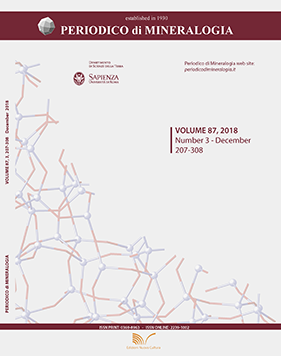Glazed roman ceramic: a multi-analytical approach
DOI:
https://doi.org/10.2451/2018PM781Keywords:
, glazed ceramic, Palatine Hill, lead-glazed, production technologyAbstract
A multi-analytical approach has been applied to characterize ancient glazed ceramics from the archaeological sites of Magna Mater temple and Domus Tiberiana on the Palatine Hill (Rome, Italy) dated between the 3rd and the early 5th century AD. The aim of this work is to investigate the production technologies of the ceramic body and the glazed coating and to explore the nature and the provenance of the raw materials. Optical microscopy (OM), Fourier transform infrared spectroscopy (FTIR) and X-ray powder diffraction (XRPD) results showed that the ceramic body is composed by quartz, K-feldspar and plagioclase, fragments of igneous and sedimentary rocks. The firing temperature was estimated at about 900-1000 °C, in uncontrolled atmosphere conditions. The mineralogical assemblage of the ceramic body is consistent with a local source of the raw materials. The results of electron microscopy coupled with energy dispersive X-ray spectroscopy (SEM-EDS) showed that the glazes contain different Si/Pb ratios. In addition, X-ray fluorescence (XRF) detected the presence of Sn although its concentration does not allow defining the studied samples as tin-glazed ceramics. However, the occurrence of this element indicates an atypical Roman production, never recognized before in coeval samples from other archaeological sites.Downloads
Published
2018-12-14
Issue
Section
ARCHAEOMETRY and CULTURAL HERITAGE


